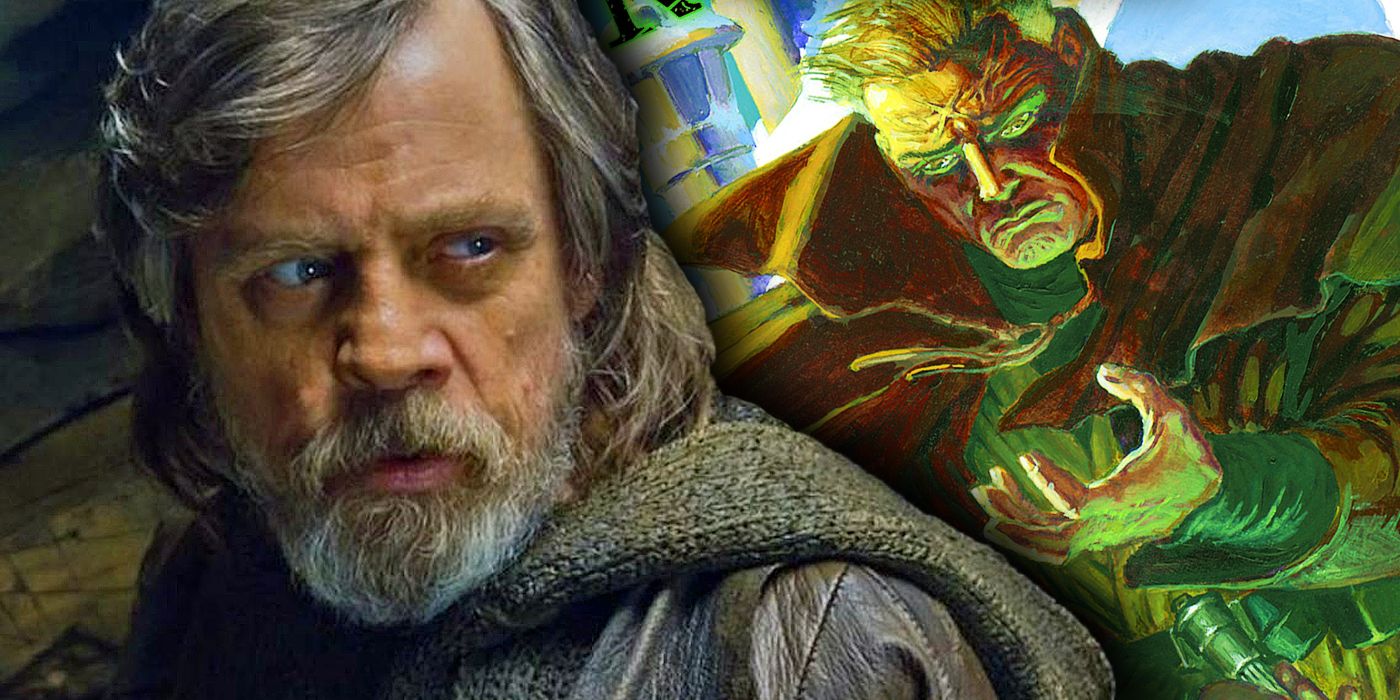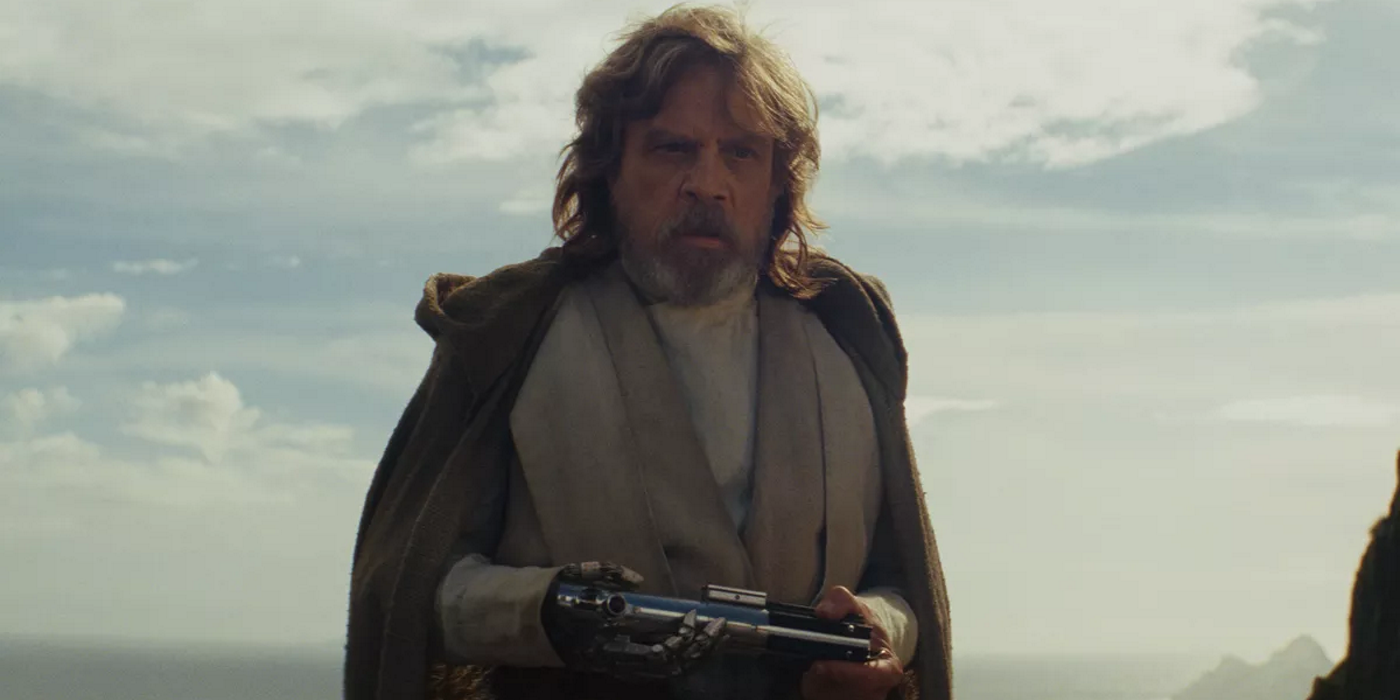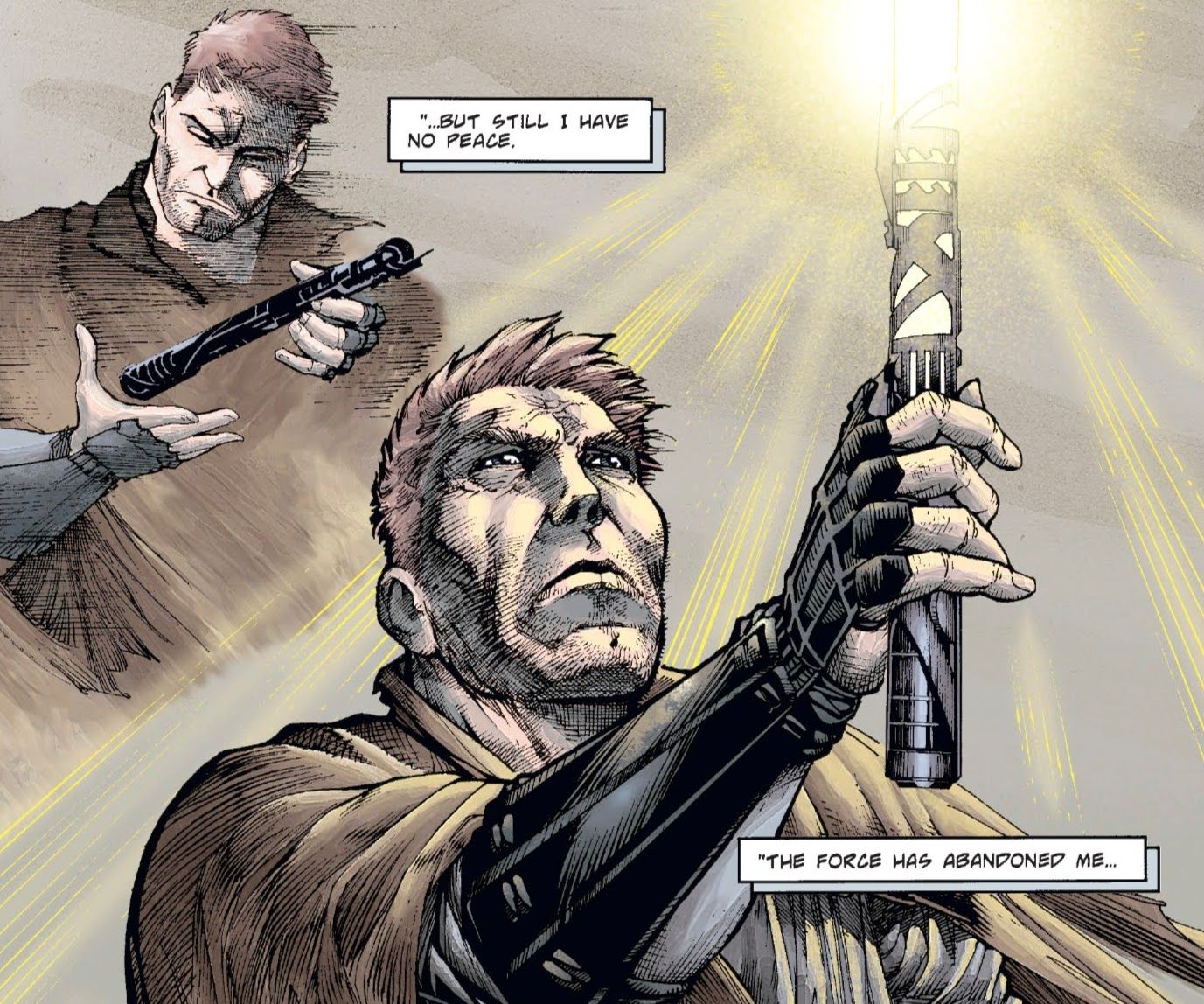Long before anyone could have dreamt of an Episode VII, since before even Jar Jar Binks had graced the big screen, the Star Wars franchise started expanding its tales of galactic conflict into the realms of comics and other media. While much of the Expanded Universe that was developed prior to Disney's acquisition of Lucasfilm is no longer considered canon, its influence can still be felt. Rian Johnson's The Last Jedi was particularly evocative of at least one of the tales now classified as Legends.
A young woman, destined to become a powerful Jedi, travels to a remote planet to meet a legendary Jedi Master, who no longer feels the Force but becomes her reluctant teacher. The Jedi is redeemed, confronts a former ally and becomes one with the Force upon his death. This probably sounds familiar to many Star Wars fans as the central plot of The Last Jedi, involving Rey and Luke Skywalker. But for readers of the Tales of the Jedi comics, this was the story of Kevin J. Anderson's and Chris Gossett's 1998 Redemption miniseries.
Redemption was the final storyline in the Tales of the Jedi comic series. This series centered on two young Jedi of the Old Republic, Ulic Qel-Droma and Exar Kun, who fell to the Dark Side, waged war and were defeated by their former Jedi allies. The conflict leaves Ulic a broken man. Blinded by rage, he had slain his own brother only to then have his connection to the Force permanently severed by his former lover, Nomi Sunrider.
Ten years later, in Redemption, Ulic has lost hope of regaining his Jedi powers. He settles on the remote world of Rhen Var, intending to live out his remaining days alone amongst the ancient ruins. Sounding familiar? Ulic's fall from grace may have been darker than Luke Skywalker's and his separation from the Force not self-imposed, but the image of a grizzled and hopeless Jedi blinded to the Force and settled on a remote world sets the premise for the final stories of both characters. It's what happens next, though, that really cements the similarity.
Vima Sunrider, daughter of Nomi, is desperate to train as a Jedi. Her mother will not allow it and so Vima seeks out the exiled Ulic to demand he train her. Rey, by contrast, has the support of her allies when she sets off in search of Luke Skywalker. But both Rey and Vima are initially turned away by their would-be teachers. Both persevere in following the Jedi through unforgiving conditions. Both are drawn to these Jedi because of the legends surrounding them. And both eventually convince the Jedi to train them through connections to their past - in the daughter of his former love, Ulic sees a chance at redemption, while R2-D2 replays Leia's old hologram, which persuades Luke to train the girl Leia has sent.
Ultimately both Luke and Ulic must confront scorned former allies - the fallen Ben Solo in Luke's case and the Cathar Jedi Sylvar in Ulic's - and both complete their own path to redemption at this moment, allowing them to become one with the Force upon their deaths. In both instances, the moment signals a sense of spiritual fulfillment.
It is difficult to say whether Rian Johnson was directly inspired by Redemption when writing The Last Jedi. If so, it has never been mentioned in any interview with the director. Looking at the similarities, though, it seems likely the Legends material had some influence on the film. Perhaps the connection came from elsewhere - an exiled Luke training a young woman apparently featured in George Lucas's original sequel trilogy plans; perhaps it was Lucas himself who drew inspiration from the comic's storyline.
Does the similarity mean this particular Legends storyline is already doomed to be purged from the new canon? Maybe. But it could also be read as deliberate narrative mirroring - destiny repeating itself, as Master teaches apprentice and apprentice teaches Master. Ulic was, after all, designed in the mold of Luke (albeit with less luck in resisting the dark side). Perhaps the characters' stories are strengthened in their echoing of one another. As Lucas himself once said of his saga - "it's like poetry; it rhymes."



